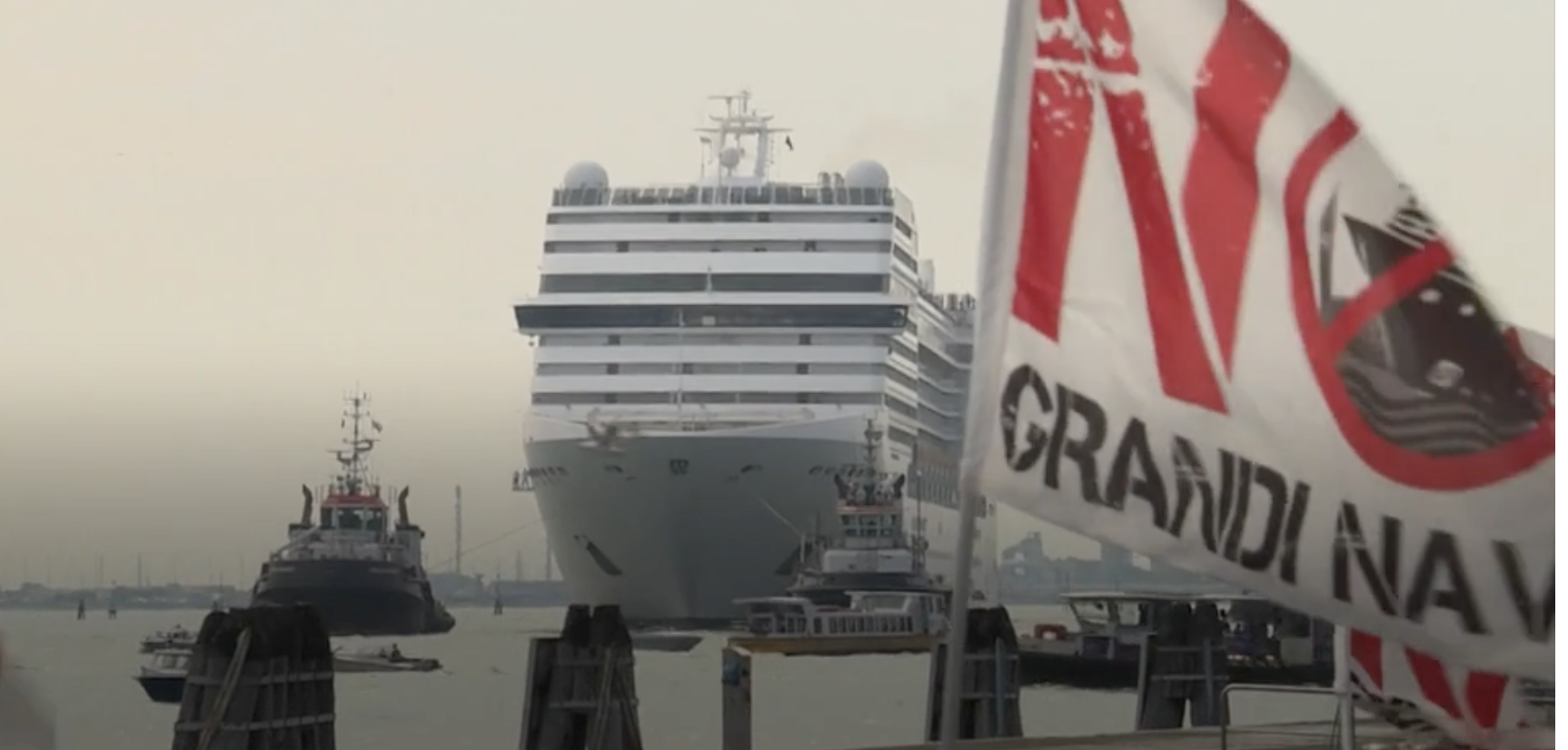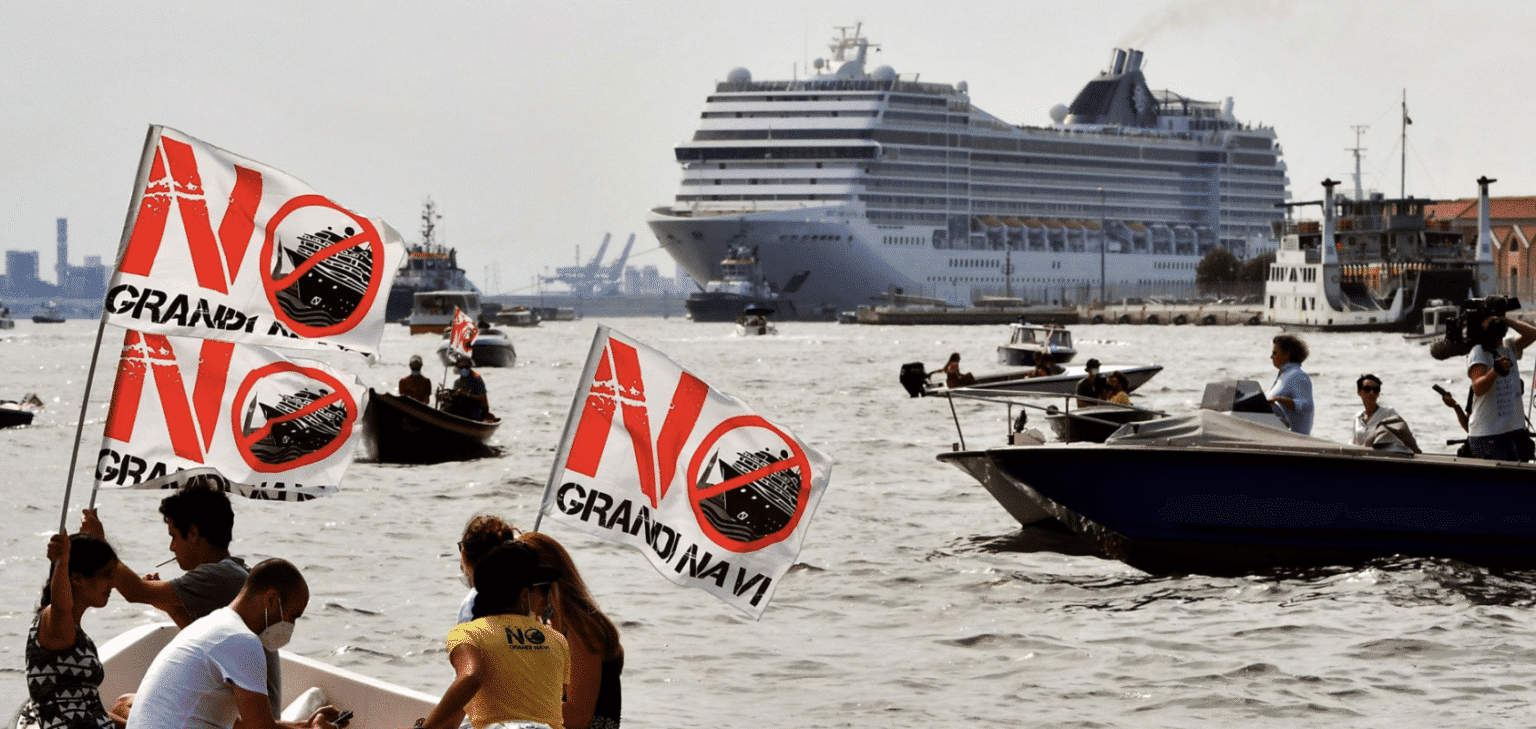Hundreds of Venice residents took to the waters in protest at the weekend after the 92,000 tonne MSC Orchestra sailed into the city centre, despite the government previously announcing a ban on large cruise ships entering the famous lagoon.
The move, which had many in the cruise industry shaking their heads at the timing, may hamper the tentative start to sailings that European lines are just getting underway. “Such a big demonstration, which went global thanks to TV and the internet, won’t help our efforts to persuade the public that cruise has changed and we care about the environment and local population.”
Most protestors rightly blamed their government for putting out statements saying big ships would no longer be welcome in the lagoon. This decision was made in April following a request from UNESCO and subsequent vote by the government and the decision was met with scepticism from the No Grandi Navi (No Big Ships) advocacy group.
Tommaso Cacciari, the leader of No Grandi Navi commented on the misleading nature of the previous ban: “The Italian government has been great at deceiving not only citizens of Venice, but newspapers and public opinion around the world.”
Cacciari’s original scepticism was due to the government announcing the ban with the only presented alternative solution being a terminal at the nearby Marghera. This is despite large infrastructure projects being necessary to make it a genuine possibility for large cruise ships to dock at Marghera.
“The government knew it was impossible, as the canal that the ships must pass through to reach Marghera is too narrow and not deep enough. So, you would need to dredge the canal in order for that to happen, which would be even more devastating for the equilibrium of the lagoon.”
“The aim of this protest is to make the government realise and explain – the whole world reported on this story – and yet here the big ships are again. It’s shameful.”
Venice residents stood in the streets and gathered in small boats, chanting and waving flags as the MSC Orchestra departed the canal.
“We are here because we are against this passage but also against a model of tourism that is destroying the city, pushing out residents, destroying the planet, the cities, and polluting,” said Marta Sottoriva a 29-year-old teacher, to ABC.
“It doesn’t surprise me as we’re used to declarations coming to nothing. But more than anything it makes me angry as we’ve had all this time during the pandemic to reflect and come up with something better. Instead, nothing has changed,” spoke Elene Riu, another Venice resident to The Guardian.

Francesco Galietti, the director of the Italian unit of the Cruise Lines International Association (CLIA) offered his perspective: “The reason why we’re sending ships to Venice this year, which is another year plagued by COVID-19, is because we’ve been asked many times by the local community to please come back.”
“For years, the cruise industry has been asking the authorities for a stable solution for the access of ships to Venice. There was a moment when we thought we nailed one, but then the government collapsed. To find a solution you need a completely perfect alignment between Rome and Venice, which is not so simple.”
Mr Galietti said that Marghera and other nearby ports were being considered as temporary options, however “they need to be repurposed for passenger use… which will require about six months.”








